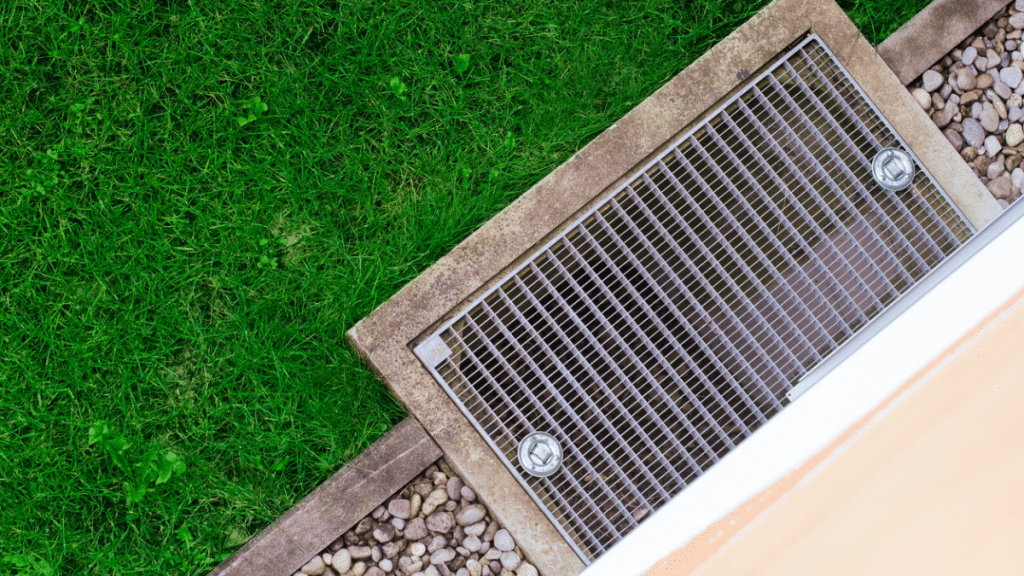Outdoor drains often start strong, flushing rainwater away, staying clear of debris, and maintaining their appearance. But within just a few seasons, things begin to change. Covers stain. Channels clog. Flow slows. What causes outdoor drainage systems, designed to be rugged and long-lasting, to fail so quickly?
To understand this frequent issue, it’s essential to look at the interaction between design, material, climate, and maintenance.
What Drainage Failure Actually Looks Like
Failure in drainage systems doesn’t always start with visible damage. Early signs may include slow-draining water or discoloration around grates. From there, issues can escalate to rust, odors from stagnant water, or even physical cracking from thermal stress. These symptoms signal deeper problems, many of which originate from overlooked design or material flaws.
For homeowners and commercial property managers alike, the consequences can be serious: pooling water that compromises foundations, slippery surfaces that raise liability concerns, and corroded systems that require total replacement far earlier than expected.
How Climate Complicates Everything
Outdoor environments are far from gentle. In coastal areas, salt air corrodes unprotected metal within months. In cold regions, repeated freeze-thaw cycles expand small cracks into major fractures. Sunlight breaks down plastic components, while storm runoff clogs tight grate openings with leaves, sand, and debris.
Even urban environments — with their heavy foot traffic, variable weather, and airborne pollutants — can wear down drains faster than expected. These environmental pressures are constant, and unless a drainage system is built to withstand them, it’s only a matter of time before problems appear.
Why the Right Materials Make All the Difference
It’s tempting to choose a drain based on appearance or initial cost, but material choice plays a massive role in long-term performance. Plastic may be cost-effective, but it’s prone to UV damage and cracking. Galvanized steel offers strength but corrodes over time if not properly maintained. Aluminum is lightweight but struggles with chemical exposure.
In contrast, stainless deck drain systems offer superior resistance to corrosion, thermal changes, and impact. They handle weather extremes without warping or rusting and retain their appearance even in harsh environments. The material’s inherent durability means fewer replacements and lower lifetime costs — a quiet but significant advantage in infrastructure planning.
When Looks Get in the Way
Modern architecture often favors sleek, minimalist finishes. While this can elevate the visual appeal of outdoor spaces, it may come at the cost of proper drainage performance. Grates with tiny openings clog faster. Channels with minimal depth back up in heavy rain. Aesthetic choices can compromise an entire system when not supported by sound engineering.
This trade-off between style and function is especially risky when drainage is treated as an afterthought rather than a critical utility. It raises an important question: Are certain design elements compromising the function they were meant to support?
Building for Longevity, Not Just Looks
There’s no one-size-fits-all solution for outdoor drainage, but there are clear best practices. Systems should be planned with proper slope to encourage flow, feature barriers that prevent debris intrusion, and be made from materials chosen for the specific climate and usage demands. Even the best system needs occasional inspection and cleaning, but good design reduces the frequency and intensity of that maintenance.
Too often, the most critical decisions — material, layout, placement — are made too late or based on the wrong criteria. Yet these early choices determine whether a drain lasts five years or twenty.
Conclusion
Outdoor drainage systems face constant pressure from the elements. When systems fail, it’s rarely due to a single event. More often, it’s a result of compounded, preventable issues tied to design shortcuts or poor material choices. Whether you’re overseeing a new build or reassessing
existing infrastructure, it’s worth asking: If your drain fails in just a few seasons, was it really the right choice?
Martin Alan is the CEO and owner of Vodaland, overseeing operations across the United States, Puerto Rico, and the Virgin Islands. With over a decade of experience in the building technologies industry, he has led efforts in business development, product innovation, and customer-driven solutions. Under his leadership, Vodaland continues to advance smart building solutions, delivering high-performance products and services to clients nationwide.

